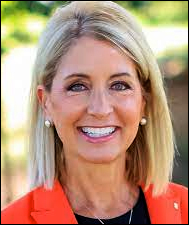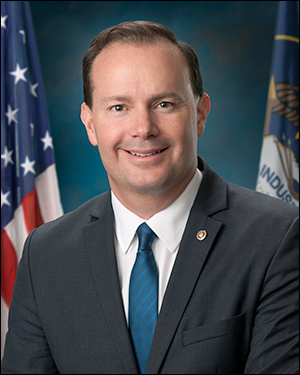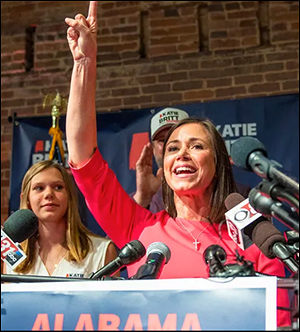By Jim Ellis — July 1, 2022
Senate
Georgia: Sen. Warnock Jumps to Significant Lead — The new Georgia Quinnipiac poll (June 23-27; 1,497 registered Georgia voters; live interview) finds Sen. Raphael Warnock (D) claiming a 54-44 percent lead over Republican Herschel Walker, the most lopsided pro-Democratic ballot test to date. The previous polling from December to mid-April (six polls) had given Walker a slight edge.Sen. Warnock carries a positive 49:39 percent job approval rating in contrast to President Biden’s upside-down 33:60 percent approval rating. Walker scores rather poorly on honesty, 39:43 percent honest to dishonest, and is not perceived to have particularly good leadership skills, 37:43 percent. As point of reference, the same polling sample finds Gov. Brian Kemp (R) and former state House Minority Leader and 2018 gubernatorial nominee Stacey Abrams (D) tied at 48 percent.
However, the study could be an anomaly.
Though polls have been moving toward Sen. Warnock, the Q-Poll takes a giant leap, so it is possible that this survey is an outlier. Democrats support Warnock, 97-2 percent; Republicans are for Walker in a 93-7 percent clip.
The Independent sector is where we may be detecting a significant skew. This group, on virtually every question but the Biden job approval query moves significantly toward the Democratic position and/or candidate, and in a greater degree than one would expect from people who self-identify as “independents” (62-33 percent for Warnock).
While this particular poll may well skew toward Sen. Warnock, it is probable that we will soon see other data yielding a much closer ballot test. The Georgia Senate race is one that is far from over.
Missouri: Independent Joins Race — Answering former Sen. John Danforth’s (R) call for a new candidate in the Senate race, former US Attorney John Wood announced his plans to enter the contest as an Independent. He claims this is a move to potentially stop former Gov. Eric Greitens from prevailing in the general election should he win the Republican nomination. In reality, however, by splitting the vote in such a manner — if Wood were to become a top-tier candidate — would likely elect the Democratic nominee.
Wood says that if elected, he would support Sen. Mitch McConnell (R-KY) for Majority Leader and would presumably caucus with the Republicans. To qualify for the ballot in Missouri, an Independent candidate must submit 10,000 valid registered voters’ signatures by an Aug. 1 deadline.
House
FL-2: Close Poll in Paired Race — The new northern Florida’s 2nd District is rated R+16 according to the FiveThirtyEight data organization. A new Sachs Media poll (June 20-23; 400 likely FL-2 general election voters), however, finds Rep. Neal Dunn (R-Panama City) leading Rep. Al Lawson (D-Tallahassee) by only a 43-40 percent margin. Perhaps the most troubling segment for Rep. Dunn is the unaffiliated voters who are breaking for Lawson by a 42-18 percent margin.
NV-3: Rep. Lee Trailing in New Survey — The Tarrance Group, polling for the April Becker (R) campaign (June 20-23; 400 likely NV-3 general election voters), posts their client and Republican challenger to a 46-44 percent edge over incumbent Rep. Susie Lee (D-Las Vegas). Likely most troubling for the Lee campaign is her deficit among Hispanic voters who comprise almost 19 percent of the 3rd District of Nevada’s population. Within this segment, Becker leads the congresswoman 48-42 percent. President Biden’s job approval rating here is a poor 37 percent.
OK-2: Runoff Set — With enough votes counted, it is now clear that the Republican runoff to replace Rep. Markwayne Mullin (R-Westville) will feature state Rep. Avery Frix (R-Muskogee), who finished first with just 14.7 percent among the crowded field, and former state Sen. John Brecheen, who was close behind with 13.8 percent support. The two just eclipsed Muskogee Police Chief Johnny Teehee (13.0 percent) and Oklahoma Republican Party chairman John Bennett (11.3 percent). The runoff winner is a lock to win the general election in a R+55 rated seat according the the 538 data group.
Redistricting
Louisiana: Supreme Court Stays Ruling — The federal judge’s ruling that disqualified the new Louisiana congressional map because it did not draw a second black district has been stayed. The United States Supreme Court (SCOTUS) took the action to at least temporarily block the ruling from taking effect. The conclusion will mean the legislature’s map will return at least for the 2022 election.
The courts, either through this case or the Alabama Voting Rights case that the SCOTUS has already scheduled for hearing, will likely determine how the Voting Rights Act is to be interpreted moving forward. This could mean that the Louisiana map and many others will be re-drawn for the 2024 election and beyond.








